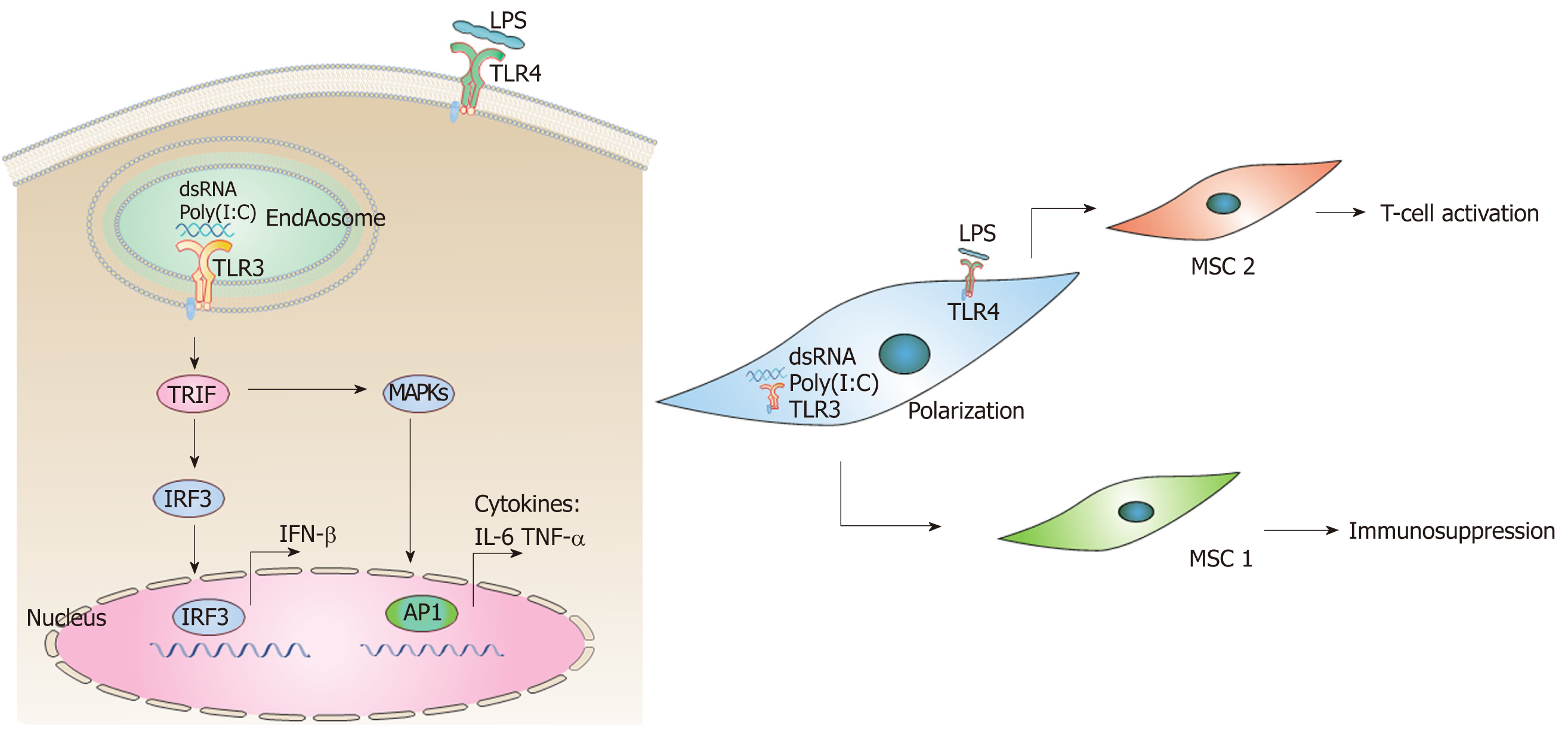Copyright
©The Author(s) 2019.
World J Stem Cells. Feb 26, 2019; 11(2): 55-72
Published online Feb 26, 2019. doi: 10.4252/wjsc.v11.i2.55
Published online Feb 26, 2019. doi: 10.4252/wjsc.v11.i2.55
Figure 2 Poly(I:C)-toll-like receptor 3 signaling pathway and polarization of mesenchymal stem cells.
A: Poly(I:C)-induced toll-like receptor 3(TLR3) signaling pathway. TLR3 recognizes dsRNA analog poly(I:C) in the endosomes and initiates signaling by TRIF, leading to activation of IRF3 and induction of IFN-β. TRIF-dependent signaling pathway also induces activation of MAPKs and AP-1, and culminates in the production of inflammatory cytokines, such as IL-6 and TNF-α; B: Polarization of MSCs into MSC1 (M1 type with a proinflammatory response) and MSC2 cells (M2 type with an anti-inflammatory response) as a result of activation of TLR3 and TLR4 respectively. Poly(I:C): polyinosinic–polycytidylic acid; dsRNA: Double-stranded RNA; TLR3: Toll-like receptor 3; TLR4: Toll-like receptor 4; TRIF: Toll–IL-1 receptor domain-containing adaptor inducing IFN-β; IRF3: Interferon regulatory factor 3; MAPKs: Mitogen-activated protein kinases; AP1: Activator protein 1; IFN-β: Interferon β; IL-6: Interleukin 6; TNF-α: Tumor necrosis factor α; LPS: Lipopolysaccharide.
- Citation: Liu Q, Chen MX, Sun L, Wallis CU, Zhou JS, Ao LJ, Li Q, Sham PC. Rational use of mesenchymal stem cells in the treatment of autism spectrum disorders. World J Stem Cells 2019; 11(2): 55-72
- URL: https://www.wjgnet.com/1948-0210/full/v11/i2/55.htm
- DOI: https://dx.doi.org/10.4252/wjsc.v11.i2.55









